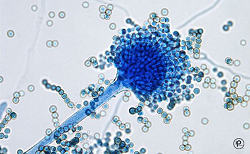Description:
Diagnosed with asthma in her 30s, Julia White teaches yoga to people with asthma to help them control their symptoms.
“I was diagnosed with asthma in my thirties in early 2003. I’d been feeling unwell and struggling to breathe for a while, and could no longer do simple things like meet friends for lunch without getting symptoms. But when my GP said it was asthma my heart sank. I lost my younger sister,Claire to an asthma attack in 1994 so I was terrified about what it meant for me.
“After a bad asthma attack left me with a cracked rib in the summer of 2003, I decided to completely re-evaluate my life and get my asthma under control. I quit my fast-paced job as a wedding and events planner and started a yoga training course. I’ve always been active and tried yoga in the past, so this was an opportunity to learn more about the exercise and how I could use it to improve my asthma.”
Discovering the benefits
“It took several months after my diagnosis to get my asthma under control and feel myself again. I started using a preventer inhaler and monitored my peak flowregularly to keep on top of my symptoms, but practising yoga was a huge help.
“At first I would start panicking if I felt my chest tightening and my breathing becoming more difficult, but yoga brought a stillness and calm into my life – helping me to get control of my breathing and manage my asthma better.
“It’s now been 10 years since my last asthma attack. My breathing is better and I feel so much healthier. While I sometimes get symptoms when the pollen count is high or when it’s cold, I’m now at a point where I can confidently manage my asthma and stay calm if I notice my breathing is becoming difficult. And I always keep my reliever inhaler with me in case of emergencies.
“I aim to practise yoga every day as I know just five minutes of yogic breathing and three or four postures will make me feel more energised and relaxed. All I need to do is find a quiet space, roll out my yoga mat and let the movements and deep breathing techniques work my mind and body.”
Medical and Patient education videos
-
Title
Description
-

Ecologist Lynne Boddy tells Bridget Kendall how fungi fight each other for resources and use “chemical warfare” to gain the upper hand.
-

Put any prejudices about poisonous toadstools and mould in damp corners out of your mind: this week’s Forum explores fungi as an extraordinarily tough and ecologically friendly building substance that could reshape our world. Plus the hundreds of thousands of species of fungi that have yet to be named and studied: some of them may hold vital clues on how to cure diseases or solve environmental problems. Bridget Kendall is joined by fungal ecologist Lynne Boddy, Danish mycologist and photographer Jens Petersen, and San Francisco-based artist, chef and fungal furniture-maker, Phil Ross. Above photo: Hygrocybe Psittacina Photo: © Jens H. Petersen. Below clip photo: Mycelium with Hyphal Strings
The Mysterious Kingdom of Fungi
BBC Radio 4 2013
-

Fungi are responsible for rotting fruit, crumbling brickwork and athlete’s foot. They have a mouldy reputation; but it’s their ability to destroy things that enables new life to grow. 90% of all plants depend on fungi to extract vital nutrients from the soil. And it’s probably thanks to fungi that the first plants were able to colonize land 450 million years ago. Professor Lynne Boddy shares her passion for fungi with Jim Al-Khalili and describes some of the vicious strategies they use to defend their territory. Direct strangulation and chemical weapons; it’s all happening underground.
BBC Radio 4 2016
-

Chris Sperring and Michael Jordan of the Association of British Fungus Groups go in search of giant bracket fungus in Dommett Wood in Somerset.
Bracket fungus grow on a variety of native trees. The vegetative part of the fungus, known as mycelium, grows under the bark of fallen wood or living trees, and will eventually break down and rot the host tree. However, the part that can most easily be seen is the fruiting body of bracket fungus. These fruiting bodies, growing on tree trunks and fallen logs, allow the fungus to reproduce and exist to produce and liberate millions of microscopic spores.
BBC Radio 4 2015
-

Scientist are unable to classify fungi as either plant or animal. They are just as likely to kill you as they are to feed you and their origins are difficult to trace.
-

Fungi Exploitation
Science is going back to basics …We look at how more than 28,000 strains of fungus held in the UK’s national collection are becoming the focus of research seeking new antibacterial drugs. The collection has great roots – it still holds an original sample of Sir Alexander Fleming’s penicillin. Quentin Cooper is joined by Dr Joan Kelley, Executive Director Bioservices, CABI and Professor Peter Bramley, Head of the School of Biological Sciences Royal Holloway, University of London.Fungi Exploitation – Electron Microscopes
February 2008 BBC Radio 4
-

Dr. Samir Agrawal, Barts Health NHS Trust, London, Fungal Update 2015, 10th Anniversary
-

Dr. Frank van de Veerdonk, Nijmegen, The Netherlands, Fungal update 2015, 10th Anniversary
-

Prof. Neil Gow, University of Aberdeen, Fungal update 2015, 10th Anniversary
